Publications by Members
2020-2022
Patricia Saldarriaga "Infected Empires: Decolonizing Zombies", 2022, Rutgers University Press. https://www.rutgersuniversitypress.org/infected-empires/9781978826786
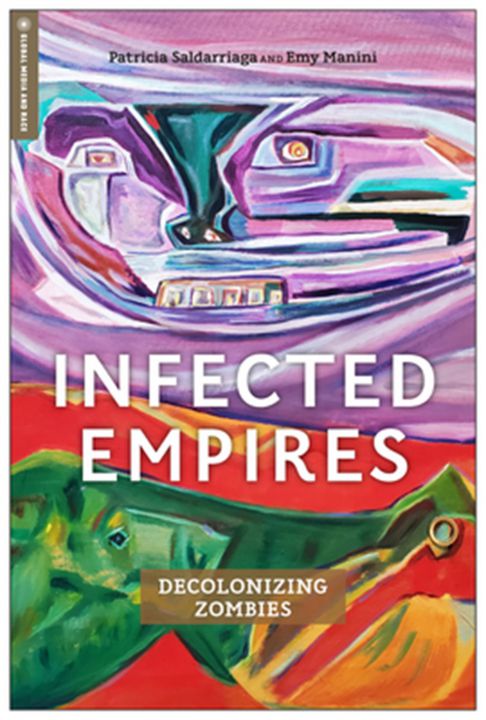
Given the current moment—polarized populations, increasing climate fears, and decline of supranational institutions in favor of a rising tide of nationalisms— it is easy to understand the proliferation of apocalyptic and dystopian elements in popular culture.
Infected Empires examines one of the most popular figures in contemporary apocalyptic film: the zombie. This harbinger of apocalypse reveals bloody truths about the human condition, the wounds of history, and methods of contending with them. Infected Empires considers parallels in the zombie genre to historical and current events on different political, theological and philosophical levels, and proposes that the zombie can be read as a figure of decolonization and an allegory of resistance to oppressive structures that racialize, marginalize, disable, and dispose of bodies. Studying films from around the world, including Latin America, Asia, Africa, the US, and Europe, Infected Empires presents a vision of a global zombie that points toward a posthuman and feminist future.
PATRICIA SALDARRIAGA is a professor of Luso-Hispanic studies at Middlebury College, Vermont. She is the author of Los espacios del 'Primero Sueño' de Sor Juana Inés de la Cruz and co-editor (with M. Júdice, I. Araújo-Branco and R. Marques) of Sor Juana e Portugal.
EMY MANINI is an independent scholar based in Seattle, Washington.
_______
Susan Lord and María Caridad Cumaná, Eds "The Cinema of Sara Gómez. Reframing Revolution", 2022, Indiana Press University. https://iupress.org/9780253057051/the-cinema-of-sara-gomez/
 Throughout the 1960s until her untimely death in 1974, Afro-Cuban filmmaker Sara Gómez engaged directly and courageously with the social, political, economic, and cultural transformations promised by the Cuban Revolution.
Throughout the 1960s until her untimely death in 1974, Afro-Cuban filmmaker Sara Gómez engaged directly and courageously with the social, political, economic, and cultural transformations promised by the Cuban Revolution.
Gómez directed numerous documentary films in 10 prolific years. She also made De cierta manera (One way or another), her only feature-length film. Her films navigate complex experiences of social class, race, and gender by reframing revolutionary citizenship, cultural memory, and political value. Not only have her inventive strategies become foundational to new Cuban cinema and feminist film culture, but they also continue to inspire media artists today who deal with issues of identity and difference. The Cinema of Sara Gómez assembles history, criticism, biography, methodology, and theory of Gómez's work in scholarly writing; interviews with friends and collaborators; the film script of De cierta manera; and a detailed and complete filmography.
Featuring striking images, this anthology reorients how we tell Cuban cinema history and how we think about the intersections of race, gender, and revolution. By addressing Gómez's entire body of work, The Cinema of Sara Gómez unpacks her complex life and gives weight to her groundbreaking cinema.
______
Victoria Ruétalo "Violated Frames. Armando Bó and Isabel Sarli's Sexploits", 2022, University of California Press. https://www.ucpress.edu/book/9780520380097/violated-frames
 When Armando Bó and Isabel Sarli began making sexploitation films together in 1956, they provoked audiences by featuring explicit nudity that would increasingly become more audacious, constantly challenging contemporary norms. Their Argentine films developed a large and international fan base. Analyzing the couple's films and their subsequent censorship, Violated Frames develops a new, roughly constructed, and "bad" archive of relocated materials to debate questions of performance, authorship, stardom, sexuality, and circulation. Victoria Ruétalo situates Bó and Sarli's films amidst the popular culture and sexual norms in post-1955 Argentina, and explores these films through the lens of bodies engaged in labor and leisure in a context of growing censorship. Under Perón, manual labor produced an affect that fixed a specific type of body to the populist movement of Peronism: a type of body that was young, lower-classed, and highly gendered. The excesses of leisure in exhibition, enjoyment, and ecstasy in Bó and Sarli's films interrupted the already fragmented film narratives of the day and created alternative sexual possibilities.
When Armando Bó and Isabel Sarli began making sexploitation films together in 1956, they provoked audiences by featuring explicit nudity that would increasingly become more audacious, constantly challenging contemporary norms. Their Argentine films developed a large and international fan base. Analyzing the couple's films and their subsequent censorship, Violated Frames develops a new, roughly constructed, and "bad" archive of relocated materials to debate questions of performance, authorship, stardom, sexuality, and circulation. Victoria Ruétalo situates Bó and Sarli's films amidst the popular culture and sexual norms in post-1955 Argentina, and explores these films through the lens of bodies engaged in labor and leisure in a context of growing censorship. Under Perón, manual labor produced an affect that fixed a specific type of body to the populist movement of Peronism: a type of body that was young, lower-classed, and highly gendered. The excesses of leisure in exhibition, enjoyment, and ecstasy in Bó and Sarli's films interrupted the already fragmented film narratives of the day and created alternative sexual possibilities.
_____
Leandro González "El (nuevo) devenir global del cine argentino. Políticas y mercados externos", 2021, Buenos Aires: TeseoPress. https://www.teseopress.com/cineargentino
 La industria del cine estuvo atravesada por procesos de internacionalización prácticamente desde sus inicios. Aunque el dominio de Hollywood persiste, en las últimas décadas se fue configurando un nuevo mapa global del cine —complejo y policéntrico—, marcado por espacios de cooperación regional, fondos de fomento transnacionales y cinematografías emergentes. En ese contexto, el caso del cine argentino es emblemático: fue cobrando protagonismo en los espacios cinematográficos regionales del Mercosur e Iberoamérica (RECAM e Ibermedia), y ganando presencia en el circuito de salas de sus principales mercados externos: España, Brasil y Francia.
La industria del cine estuvo atravesada por procesos de internacionalización prácticamente desde sus inicios. Aunque el dominio de Hollywood persiste, en las últimas décadas se fue configurando un nuevo mapa global del cine —complejo y policéntrico—, marcado por espacios de cooperación regional, fondos de fomento transnacionales y cinematografías emergentes. En ese contexto, el caso del cine argentino es emblemático: fue cobrando protagonismo en los espacios cinematográficos regionales del Mercosur e Iberoamérica (RECAM e Ibermedia), y ganando presencia en el circuito de salas de sus principales mercados externos: España, Brasil y Francia.
El libro ofrece un análisis sistemático e integral de estas temáticas, empleando distintas herramientas de las ciencias sociales y contemplando la interrelación entre la dimensión material, simbólica y jurídica de las películas. Pretende ser una contribución para el campo de los estudios sobre cine y para quienes implementan políticas audiovisuales. De modo complementario, busca aportar claves analíticas para comprender la circulación de la cultura en el mundo contemporáneo. En este complejo entramado se despliega un nuevo devenir global del cine argentino, cuyo desarrollo en la actualidad se enfrenta a otros y nuevos desafíos.
______
Jerónimo Rivera-Betancur "El viaje sin héroe del cine colombiano", 2021, Co-editado por Universidad de La Sabana (Colombia) y la Universidad de Navarra (España). https://jeronimorivera.com/2020/09/12/el-viaje-del-heroe-cinecolombiano/
 Se trata de mi séptimo libro y allí comparto algunas conclusiones de mi tesis doctoral "El viaje del protagonista del cine colombiano: Contexto, gobierno e industria en una narrativa antiheroica", que obtuvo la máxima calificación y la mención summa cum laude en la Universidad de Navarra (España). La tesis y el proceso de investigación ha sido publicada ya parcialmente en mi anterior libro El papel del cine colombiano en la escena latinoamericana y en esta nueva publicación se materializa en un modelo alternativo al tradicional "Viaje del héroe" de Joseph Campbell para representar narrativas sin héroes (como la colombiana).
Se trata de mi séptimo libro y allí comparto algunas conclusiones de mi tesis doctoral "El viaje del protagonista del cine colombiano: Contexto, gobierno e industria en una narrativa antiheroica", que obtuvo la máxima calificación y la mención summa cum laude en la Universidad de Navarra (España). La tesis y el proceso de investigación ha sido publicada ya parcialmente en mi anterior libro El papel del cine colombiano en la escena latinoamericana y en esta nueva publicación se materializa en un modelo alternativo al tradicional "Viaje del héroe" de Joseph Campbell para representar narrativas sin héroes (como la colombiana).
El texto tiene cuatro partes:
1. Justicia, autoridad y relación con la norma: valores universales en una cinematografía local.
2. Entre el protagonismo y el heroísmo.
3. Las misiones de los protagonistas del cine colombiano: metodología, concepto y análisis.
4. El viaje del protagonista del cine colombiano: modelo y análisis.
Al final se incluye el análisis de cinco películas latinoamericanas como una invitación a aplicar el modelo en cinematografías similares a la nuestra.
_____
Marina Cavalcanti Tedesco "Trabalhadoras do cinema brasileiro: mulheres muito além da direção", 2021, Nau Editora. https://naueditora.com.br/autor/marina-cavalcanti-tedesco/
 O livro "Trabalhadoras do cinema brasileiro: mulheres muito além da direção" é uma coletânea organizada por Marina Cavalcanti Tedesco, a qual reúne 11 textos de importantes pesquisadoras do país. Seus capítulos são: "Palavras e afetos: trajetórias das roteiristas Adelia Sampaio e Cleissa Martins", de Edileuza Penha de Souza e Ceiça Ferreira; "A presença do 'feminino' na direção de arte no cinema brasileiro", de India Mara Martins e Tainá Xavier; "Escuta s. fem.", de Clotilde B. Guimarães (Tide Borges) e Marina Mapurunga de Miranda Ferreira; "20 anos de Tônica dominante: reflexões diversas a partir de uma fotografia histórica", de Marina Cavalcanti Tedesco; "Montadoras brasileiras entre 1900-1980", de Elianne Ivo Barroso e Natalia Teles Fróes; "Nas trilhas das mulheres: compositoras e cinema no Brasil", de Suzana Reck Miranda e Debora Regina Taño; "A construção da pauta de gênero como imaginação política no espaço audiovisual brasileiro", de Lia Bahia, "Carta às mulheres de Cinema & Educação", de Ana Paula Nunes, Eliany Salvatierra e Fernanda Mathieu; "Festivais de cinema no Brasil – uma abordagem feminina", de Tetê Mattos; "A exibição cinematográfica: procurando rastros de mulheres na etapa final da cadeia do cinema", de Cíntia Langie e Lívia Cabrera; e "Cinema para ler: pesquisadoras na Cinemateca do Museu Guido Viaro (1976-1980)", de Ana Claudia Camila Veiga de França e Ronaldo de Oliveira Corrêa.
O livro "Trabalhadoras do cinema brasileiro: mulheres muito além da direção" é uma coletânea organizada por Marina Cavalcanti Tedesco, a qual reúne 11 textos de importantes pesquisadoras do país. Seus capítulos são: "Palavras e afetos: trajetórias das roteiristas Adelia Sampaio e Cleissa Martins", de Edileuza Penha de Souza e Ceiça Ferreira; "A presença do 'feminino' na direção de arte no cinema brasileiro", de India Mara Martins e Tainá Xavier; "Escuta s. fem.", de Clotilde B. Guimarães (Tide Borges) e Marina Mapurunga de Miranda Ferreira; "20 anos de Tônica dominante: reflexões diversas a partir de uma fotografia histórica", de Marina Cavalcanti Tedesco; "Montadoras brasileiras entre 1900-1980", de Elianne Ivo Barroso e Natalia Teles Fróes; "Nas trilhas das mulheres: compositoras e cinema no Brasil", de Suzana Reck Miranda e Debora Regina Taño; "A construção da pauta de gênero como imaginação política no espaço audiovisual brasileiro", de Lia Bahia, "Carta às mulheres de Cinema & Educação", de Ana Paula Nunes, Eliany Salvatierra e Fernanda Mathieu; "Festivais de cinema no Brasil – uma abordagem feminina", de Tetê Mattos; "A exibição cinematográfica: procurando rastros de mulheres na etapa final da cadeia do cinema", de Cíntia Langie e Lívia Cabrera; e "Cinema para ler: pesquisadoras na Cinemateca do Museu Guido Viaro (1976-1980)", de Ana Claudia Camila Veiga de França e Ronaldo de Oliveira Corrêa.
_____
Lorena Cuya Agilano "Fictions of Migration: Narratives of Displacement in Peru and Bolivia", 2021, Ohio State Press. https://ohiostatepress.org/books/titles/9780814214657.html
 Lorena Cuya Gavilano's Fictions of Migration: Narratives of Displacement in Peru and Bolivia is an aesthetic and cultural analysis of how political and economic trends have impacted narratives about migration in Peru and Bolivia in the late twentieth and early twenty-first centuries. Going beyond representations of migrants as subjects of crisis, Fictions of Migration approaches the migrant as a subject of knowledge, examining how narratives of migrancy in the Andes have be- come affective epistemological tools to learn about migrants' experiences, cultural roots, and the mishaps of modernity that caused their displacement in the first place. Through the examination of films and novels—by such writers and filmmakers as José María Arguedas, Blanca Wiethüchter, Daniel Alarcón, Claudia Llosa, Jorge Sanjinés, Juan Carlos Valdivia, Jesús Urzagasti, and Paolo Agazzi, among others– Cuya Gavilano looks at the intersection of crisis, knowledge, and affect in order to piece together seemingly incompatible images of migrancy. She explores how dissimilar images of migration in two countries with a common ethnic and cultural history are the result of differentiated emotional and social responses to the adoption and adaptation of neoliberal economic agendas. Fictions of Migration thereby shows An- dean stories of displacement can serve as distinctive models to understand multiethnic national spaces globally.
Lorena Cuya Gavilano's Fictions of Migration: Narratives of Displacement in Peru and Bolivia is an aesthetic and cultural analysis of how political and economic trends have impacted narratives about migration in Peru and Bolivia in the late twentieth and early twenty-first centuries. Going beyond representations of migrants as subjects of crisis, Fictions of Migration approaches the migrant as a subject of knowledge, examining how narratives of migrancy in the Andes have be- come affective epistemological tools to learn about migrants' experiences, cultural roots, and the mishaps of modernity that caused their displacement in the first place. Through the examination of films and novels—by such writers and filmmakers as José María Arguedas, Blanca Wiethüchter, Daniel Alarcón, Claudia Llosa, Jorge Sanjinés, Juan Carlos Valdivia, Jesús Urzagasti, and Paolo Agazzi, among others– Cuya Gavilano looks at the intersection of crisis, knowledge, and affect in order to piece together seemingly incompatible images of migrancy. She explores how dissimilar images of migration in two countries with a common ethnic and cultural history are the result of differentiated emotional and social responses to the adoption and adaptation of neoliberal economic agendas. Fictions of Migration thereby shows An- dean stories of displacement can serve as distinctive models to understand multiethnic national spaces globally.
_____
Steve Solot "The Audiovisual Public Policy Landscape in Latin America", 2021, Publicada por el Latin American Training Center-LATC. https://latamtrainingcenter.com/publications/the-audiovisual-public-policy-landscape-in-latin-america-2021/
 The Latin American Training Center-LATC announces the publication of a new and unique non-profit, bilingual Spanish-English book "The Audiovisual Public Policy Landscape in Latin America."
The Latin American Training Center-LATC announces the publication of a new and unique non-profit, bilingual Spanish-English book "The Audiovisual Public Policy Landscape in Latin America."
Sponsored by Olsberg•SPI, the publication is available free of charge for download in e-book format beginning on March 30th on both LATC and Olsberg•SPI websites.
This bilingual, Spanish-English publication offers a unique collection of articles contributed by selected experienced and renowned public and private-sector figures from around the hemisphere, as well as Spain, on current, essential, and often controversial audiovisual industry public policy issues.
The launch of "The Audiovisual Public Policy Landscape in Latin America" marks the second stage of the new focus by Olsberg•SPI on Latin America, following the launch of its Public Policy Audiovisual Diagnostic Consultation, the free one-hour consultation service for public sector entities in Latin America, which offers an opportunity to discuss all aspects of a country's or state's audiovisual strategy with the firm's experts, and how it could be improved or updated. The application deadline for consultations has now been extended until May 30, 2021.
_____
Rielle Navitski and Leslie Marsh "Latinx Media: An open-Access Textbook", 2021, University of Georgia. https://open.online.uga.edu/latinxmedia/
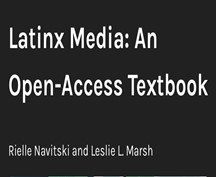 Edited by Rielle Navitski and Leslie Marsh with the support of the Affordable Learning Georgia initiative, the freely available textbook addresses a range of media forms (film, television, and digital media) and identities (issues of race, indigeneity, gender, and sexuality). It also includes media histories of the largest national-origin groups (Mexican, Cuban, Puerto Rican, Dominican, Central American), and profiles of key Latinx creatives (this section is slated to be significantly expanded with student work as part of the textbook development process). It incorporates chapters from leading and emerging scholars in the field.
Edited by Rielle Navitski and Leslie Marsh with the support of the Affordable Learning Georgia initiative, the freely available textbook addresses a range of media forms (film, television, and digital media) and identities (issues of race, indigeneity, gender, and sexuality). It also includes media histories of the largest national-origin groups (Mexican, Cuban, Puerto Rican, Dominican, Central American), and profiles of key Latinx creatives (this section is slated to be significantly expanded with student work as part of the textbook development process). It incorporates chapters from leading and emerging scholars in the field.
The editors hope that many of you may find all or part of the text useful as a cost-free option for students.
If you might consider using the textbook in your classes and would be willing to provide feedback/solicit feedback from your students, the editors are gathering contact information here: https://forms.gle/SrmzLfv75buHrMVQ9
For more information or comments, send an email to rnavitsk@uga.edu.
_____
Claudia Sandberg "Peter Lilienthal. A Cinema of Exile and Resistance", 2021, Berghahn Books. https://www.berghahnbooks.com/title/SandbergPeter
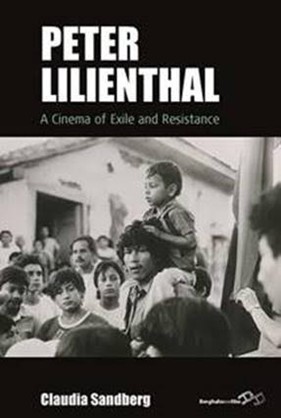 Best known for his 1979 film David, Peter Lilienthal was an unusual figure within postwar filmmaking circles. A child refugee from Nazi Germany who grew up in Uruguay, he was uniquely situated at the crossroads of German, Jewish, and Latin American cultures: while his work emerged from West German auteur filmmaking, his films bore the unmistakable imprints of Jewish thought and the militant character of New Latin American cinema. Peter Lilienthal is the first comprehensive study of Lilienthal's life and career, highlighting the distinctively cross-cultural and transnational dimensions of his oeuvre, and exploring his role as an early exemplar of a more vibrant, inclusive European film culture.
Best known for his 1979 film David, Peter Lilienthal was an unusual figure within postwar filmmaking circles. A child refugee from Nazi Germany who grew up in Uruguay, he was uniquely situated at the crossroads of German, Jewish, and Latin American cultures: while his work emerged from West German auteur filmmaking, his films bore the unmistakable imprints of Jewish thought and the militant character of New Latin American cinema. Peter Lilienthal is the first comprehensive study of Lilienthal's life and career, highlighting the distinctively cross-cultural and transnational dimensions of his oeuvre, and exploring his role as an early exemplar of a more vibrant, inclusive European film culture.
Contents
Introduction An Uneasy Fit
Chapter 1 A Jewish Filmmaker in
Postwar Germany
Chapter 2 Of Rebels, Soldiers, and Dreamers
Chapter 3 Across the Cold War Divide
Conclusion Recovering Lost Pasts
Appendix In Dialogue:
Conversation with Peter Lilienthal
The Adventure of Filmmaking: Interview with Antonio Skármeta
_____
Niamh Thornton "Tastemakers and Tastemaking: Mexico and Curated Screen Violence", 2020, SUNY series in Latin American Cinema. https://www.sunypress.edu/p-6975-tastemakers-and-tastemaking.aspx
 Considers how and why taste persists in the analysis of Mexican film and television by looking at key figures and their impact on the curation of violence.
Considers how and why taste persists in the analysis of Mexican film and television by looking at key figures and their impact on the curation of violence.
Tastemakers and Tastemaking develops a new approach to analyzing violence in Mexican films and television by examining the curation of violence in relation to three key moments: the decade-long centennial commemoration of the Mexican Revolution launched in 2010; the assaults and murders of women in Northern Mexico since the late 1990s; and the havoc wreaked by the illegal drug trade since the early 2000s. Niamh Thornton considers how violence is created, mediated, selected, or categorized by tastemakers, through the strategic choices made by institutions, filmmakers, actors, and critics. Challenging assumptions about whose and what kind of work merit attention and traversing normative boundaries between "good" and "bad" taste, Thornton draws attention to the role of tastemaking in both "high" and "low" media, including film cycles and festivals, adaptations of Mariano Azuela's 1915 novel, Los de Abajo, Amat Escalante's hyperrealist art films, and female stars of recent genre films and the telenovela, La reina del sur. Making extensive use of videographic criticism, Thornton pays particularly close attention to the gendered dimensions of violence, both on and off screen.
_____
Miriam Haddu y Niamh Thornton eds. "Legacies of the Past: Memory and Trauma in Mexican Visual and Screen Cultures", 2020, EUP. https://edinburghuniversitypress.com/
 El minucioso examen de Bordes de lo real en la ficción surge de un diagnóstico con respecto al panorama del cine contemporáneo en Chile, y la dificultad teórica que significa el pensar un cine que pone en conflicto sus propios márgenes: se trata de una renovación dialogante del cine de los años dos mil (el llamado Novísimo Cine Chileno), que desde lo privado y lo afectivo se inmiscuye en las arenas de lo público, lo social y lo político en la cinematografía de ficción del presente. Carolina Urrutia y Ana Fernández analizan a lo largo de estas páginas las propuestas y temas del cine chileno de los últimos años y nos muestran cómo aquellas películas despliegan modos inéditos de elaboración para reflexionar sobre hechos y problemas de gran impacto público o contextos sociales conflictivos de violencia, desigualdad y desamparo social, y cómo el acercamiento entre la ficción y lo real se correlaciona con sus propios mecanismos narratológicos y representacionales.
El minucioso examen de Bordes de lo real en la ficción surge de un diagnóstico con respecto al panorama del cine contemporáneo en Chile, y la dificultad teórica que significa el pensar un cine que pone en conflicto sus propios márgenes: se trata de una renovación dialogante del cine de los años dos mil (el llamado Novísimo Cine Chileno), que desde lo privado y lo afectivo se inmiscuye en las arenas de lo público, lo social y lo político en la cinematografía de ficción del presente. Carolina Urrutia y Ana Fernández analizan a lo largo de estas páginas las propuestas y temas del cine chileno de los últimos años y nos muestran cómo aquellas películas despliegan modos inéditos de elaboración para reflexionar sobre hechos y problemas de gran impacto público o contextos sociales conflictivos de violencia, desigualdad y desamparo social, y cómo el acercamiento entre la ficción y lo real se correlaciona con sus propios mecanismos narratológicos y representacionales.
______
Salomé Aguilera Skvirsky "The Process Genre. Cinema and Aesthetic of Labour", 2020, Duke University Press. https://www.dukeupress.edu/the-process-genre
 From IKEA assembly guides and "hands and pans" cooking videos on social media to Mister Rogers's classic factory tours, representations of the step-by-step fabrication of objects and food are ubiquitous in popular media. In The Process Genre Salomé Aguilera Skvirsky introduces and theorizes the process genre—a heretofore unacknowledged and untheorized transmedial genre characterized by its representation of chronologically ordered steps in which some form of labor results in a finished product. Originating in the fifteenth century with machine drawings, and now including everything from cookbooks to instructional videos and art cinema, the process genre achieves its most powerful affective and ideological results in film. By visualizing technique and absorbing viewers into the actions of social actors and machines, industrial, educational, ethnographic, and other process films stake out diverse ideological positions on the meaning of labor and on a society's level of technological development. In systematically theorizing a genre familiar to anyone with access to a screen, Skvirsky opens up new possibilities for film theory.
From IKEA assembly guides and "hands and pans" cooking videos on social media to Mister Rogers's classic factory tours, representations of the step-by-step fabrication of objects and food are ubiquitous in popular media. In The Process Genre Salomé Aguilera Skvirsky introduces and theorizes the process genre—a heretofore unacknowledged and untheorized transmedial genre characterized by its representation of chronologically ordered steps in which some form of labor results in a finished product. Originating in the fifteenth century with machine drawings, and now including everything from cookbooks to instructional videos and art cinema, the process genre achieves its most powerful affective and ideological results in film. By visualizing technique and absorbing viewers into the actions of social actors and machines, industrial, educational, ethnographic, and other process films stake out diverse ideological positions on the meaning of labor and on a society's level of technological development. In systematically theorizing a genre familiar to anyone with access to a screen, Skvirsky opens up new possibilities for film theory.
_____
Carolina Urrutia Neno y Ana Fernández "Bordes de lo real en la ficción. Cine chileno contemporáneo", 2020, Editorial Metales pesados. https://metalespesados.cl/
 El minucioso examen de Bordes de lo real en la ficción surge de un diagnóstico con respecto al panorama del cine contemporáneo en Chile, y la dificultad teórica que significa el pensar un cine que pone en conflicto sus propios márgenes: se trata de una renovación dialogante del cine de los años dos mil (el llamado Novísimo Cine Chileno), que desde lo privado y lo afectivo se inmiscuye en las arenas de lo público, lo social y lo político en la cinematografía de ficción del presente.
El minucioso examen de Bordes de lo real en la ficción surge de un diagnóstico con respecto al panorama del cine contemporáneo en Chile, y la dificultad teórica que significa el pensar un cine que pone en conflicto sus propios márgenes: se trata de una renovación dialogante del cine de los años dos mil (el llamado Novísimo Cine Chileno), que desde lo privado y lo afectivo se inmiscuye en las arenas de lo público, lo social y lo político en la cinematografía de ficción del presente.
Carolina Urrutia y Ana Fernández analizan a lo largo de estas páginas las propuestas y temas del cine chileno de los últimos años y nos muestran cómo aquellas películas despliegan modos inéditos de elaboración para reflexionar sobre hechos y problemas de gran impacto público o contextos sociales conflictivos de violencia, desigualdad y desamparo social, y cómo el acercamiento entre la ficción y lo real se correlaciona con sus propios mecanismos narratológicos y representacionales.
_____
David Oubiña "Ceremonias de lo invisible. Ensayos sobre cine y la Guerra", 2020, Ediciones Metales pesados. https://acceso.prochile.cl/difusion/difusion2021/octubre/filfrankfurt/2-metales-pesados-catalogo-baja.pdf
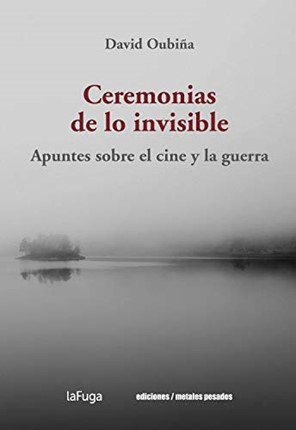 ¿Cómo aprehender lo que no se puede ver con un artefacto que solo captura el movimiento evidente de las cosas?, se pregunta de manera desafiante David Oubiña. Ceremonias de lo invisible propone al lector pensar al cine ya no como un dispositivo de representación, sino como una máquina capaz de percibir los límites de la experiencia, en donde las imágenes cinematográficas pierden su carácter de transparencia para adentrarse en los dilemas y las tensiones de lo real.
¿Cómo aprehender lo que no se puede ver con un artefacto que solo captura el movimiento evidente de las cosas?, se pregunta de manera desafiante David Oubiña. Ceremonias de lo invisible propone al lector pensar al cine ya no como un dispositivo de representación, sino como una máquina capaz de percibir los límites de la experiencia, en donde las imágenes cinematográficas pierden su carácter de transparencia para adentrarse en los dilemas y las tensiones de lo real.
En este libro, la muerte será pensada como aniquilación de masas o como un accidente, individual y fortuito. Ambas figuras, invertidas y complementarias, son revisadas por el autor en dos ensayos breves que transitan a través de los filmes Shoah (Claude Lanzmann, 1985) y Ugetsu, cuentos de la luna pálida después de la lluvia (Kenji Mizoguchi, 1953). La muerte y la guerra son dos tópicos reunidos para desplegar reflexiones sobre el fracaso de la representación, sobre imágenes que muestran poco, casi nada, pero que sin embargo se abren a la posibilidad de seguir exponiendo, allí donde lo real no se deja atrapar.
_________
2019-2020
Mejor artículo-por primera vez hubo un empate entre:
Andrew C. Rajca "Urban Imaginaries, Spatial Practices, and Cinematic Aesthetics in Sérgio Bianchi's Os inquilinos." Arizona Journal of Hispanic Cultural Studies, vol. 22, 2018, p. 181-198. Project MUSE, doi:10.1353/hcs.2018.0012 http://doi.org/10.1353/hcs.2018.0012
Y
Niall Geraghty “Sonorous memory in Jonathan Perel’s El predio (2010) and Los murales (2011).” Memory Studies (2018).
https://doi.org/10.1177/1750698018790120
Mejor artículo (estudiante de pos-graduado)
Luciana Caresani. “Representación y memoria en las imágenes de archivo del cine argentino sobre la guerra de Malvinas.” En Tompkins, C., Smiraglia, R., Christofoletti Barrenha, N., Cuarterolo A. y Flores, S. (comp.). Diez miradas sobre el cine y audiovisual: volumen aniversario de la revista Imagofagia.
http://www.asaeca.org/imagofagia/index.php/imagofagia/article/view/
Premio Investigador Inicio de la carrera
Juan Llamas Rodríguez Assistant Professor. "Critical Media Studies School of Arts, Technology, and Emerging Communication". University of Texas, Dallas, EEUU
_______
2018-2019
- Constanza Burucúa & Carolina Sitnisky (eds.). The Precarious in the Cinemas of the Americas. Palgrave, 2018.
- Geoffrey Maguire & Rachel Randall (eds.) New Visions of Adolescence in Contemporary Latin America Cinema. Palgrave, 2018.
- Claudia Sandberg & Carolina Rocha (eds.) Contemporary Latin American Cinema. Resisting Neoliberalism? Palgrave, 2018.
- Charles St-Georges. Haunted Families and Temporal Normativity in Hispanic Horror Films. Troubling Timelines. Lexington, 2018.
- Barrow, Sarah. Contemporary Peruvian Cinema: History, Identity and Violence on Screen. London: I.B. Tauris, 2018.
- Vázquez Vázquez, María Mercedes. The Question of Class in Contemporary Latin American Cinema. Lanham: Lexington Books, 2018.
